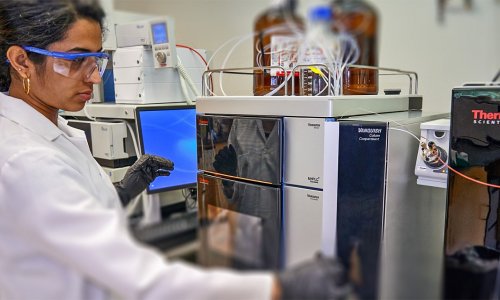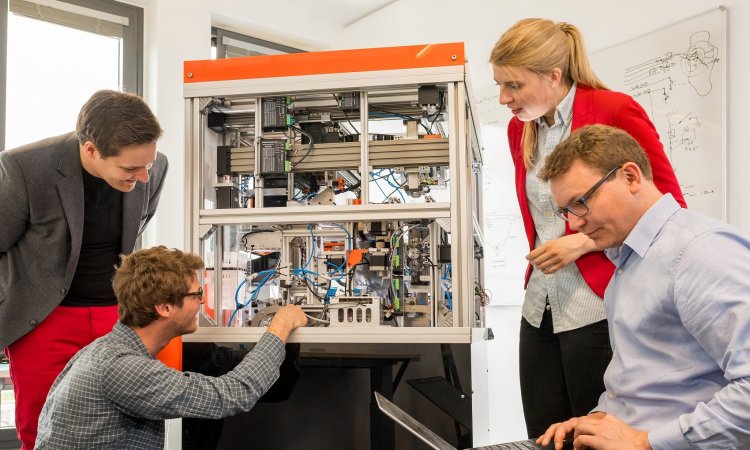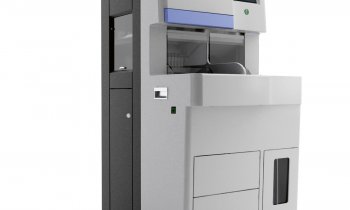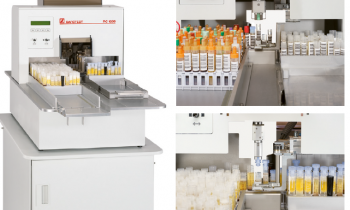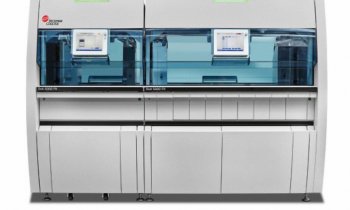Analytica 25-28 April 2006
Red green and white biotechnology
Red green and white biotechnology
Experts estimate the global value of biologically manufactured chemical products to be 50 billion euros. Apart from the USA, Germany is now considered the world’s strongest location for biotechnological development and production. For this reason biotechnology will again be an important sector at the 20th Analytic and Analytica Conference, which covers laboratory technology, analysis, high-tech laboratory automation and data and process management.
Three areas of biotechnology have become defined by colours - red, green and, in more recent years, white. Although red biotechnology (medical and pharmaceutical applications) and green biotechnology (genetic engineering) are the predominant applications in the eyes of the public, ‘white’ biotechnology is the sector with potential to secure Europe’s - and especially Germany’s - technological and economic lead in the chemical industry, according to a report from Messe München International (MMI), the organiser of Analytica. ‘White products are old and new products for which classic syntheses are increasingly replaced by biotechnological processes during production, at least in part. The term white biotechnology refers the use of biological means and techniques to optimise industrial processes. A distinction is made between biotransformation, i.e. enzyme and cell-catalyst processes, and fermentative manufacturing processes. While products manufactured using biotransformation are created in processes with one - or a just few - steps, entire metabolic pathways are used in fermentative processes.’
MMI points out that, in the 1980s Degussa, a Dusseldorf-based supplier of specialty chemicals, began to develop processes for producing amino acids for animal feed - a market now worth billions. Henkel is also working on the front lines with improved enzyme systems that make laundry detergents more efficient and environmentally compatible. Wacker supplies specialty products such as cysteine and cyclodextrins (odour-absorbing agents used in cleaning products and suit fabrics production). At BASF, biochemical processes are used to produce vitamins and precision chemicals.
‘Applications are diverse. Researchers know of over 3,000 enzymes, 150 of which are already used in commercial applications,’ the MMI report continues. ‘White biotechnology is also increasingly important for new techniques and products (mostly more environmentally compatible) in other branches of industry. The share of chemical products produced using biotechnology is only 5%. However, that figure is expected to increase to 10-20% by 2010 and will probably continue to grow afterwards (2004 McKinsey study on biotechnology’s contribution to the chemical industry). In five years, 60% of all chemical products could involve the use of white biotechnology in some form.’
• Biotechnology advantages:
• Reduced synthesis steps
• lower consumption of raw materials
• increased energy efficiency
• lower emissions
• lower production costs.
MMI provides this example: Until 1990, Vitamin B2 (riboflavin) was produced using a multiple-step synthesis process; then researchers at BASF established a single-step fermentation process based on soy oil that offered key advantages over the old petrochemical process. Waste was reduced by 95%, CO2 emissions by 30% and resource consumption by 60 %. As a result, the cost of producing Vitamin B2 decreased by 40%.
Transgenic potatoes: German companies process some 650,000 tons of starch annually, for use in the paper, textile and adhesive industries. Potato starch is a mixture of amylose and amylopectin, but only one is generally wanted for industrial applications. Separating these is complicated and pollutes the environment, so growers and genetic engineers are looking for potatoes with only one component. By switching off the gene responsible for producing either amylose or amylopectin, genetic engineers at BASF Plant Science have developed two such potatoes. This example - bordering between green and white - demonstrates that white biotechnology can be used in several branches of industry: its significance both in the chemical industry and in food, cosmetics, textile and paper industries, continues to increase. New tools such as screening methods, metabolic engineering, global analysis methods such as genomics, proteomics and metabolomics, as well as bioinformatics tools are also becoming more readily available.
Red biotechnology continues to dominate the industry, in terms of the number of companies and sales. The pharmaceutical sector is the place to make money, MMI points out. The number of green biotech companies (focusing on genetically engineered pest control, improved farming methods, new foodstuffs, renewable raw materials and medications from transgenic plants) is considerably lower.
Klaus Dittrich, Managing Director of Munich International Trade Fairs and head of Analytica, concludes: ‘The close link between personalised diagnostics - i.e. identifying the genes that determine why pharmaceuticals have different effects on different individuals - and therapy is opening up new dimensions in the recognition and treatment of illnesses, especially the treatment of diseases that involve tumours. I refer to mini genetic-testing laboratories for emergency medicine, online diagnostics to understand the interaction processes of living cells and the use of biochips for the early recognition of common illnesses. That also applies to the use of biotechnology in industrial manufacturing. White biotechnology may not generate as much public attention as red or green biotechnology, but it has the potential to help the German biotech industry return to the top of the global market.’
Details: www.analytica.de
www.analytica-world.com
01.03.2006




